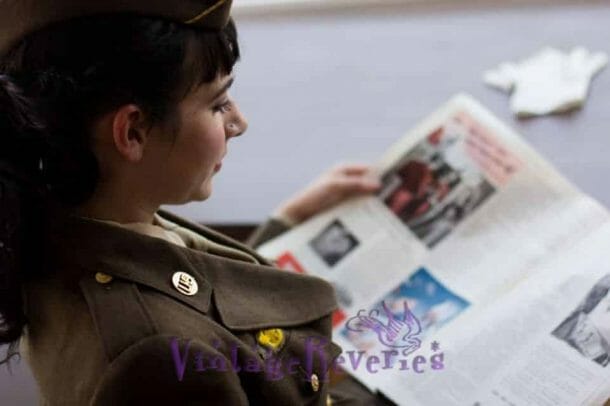
1892 Fashion Magazine – 10 scans from the Delineator

One of the fascinating ways to glimpse into the past is through the pages of old magazines, which not only detail the day-to-day lives of people but also reflect the aspirations, aesthetic sensibilities, and culture of their time. I’ve recently embarked on a journey into the past by scanning the 1892 January edition of The Delineator, a celebrated magazine published by Butterick Publishing, renowned for its detailed representations of late 19th-century women’s fashion. This particular edition is a treasure trove for anyone interested in the intricacies of Victorian fashion and lifestyle. The illustrations and advertisements contained within its pages paint a vivid picture of the trends, priorities, and everyday concerns of women in the 1890s, providing a fascinating lens into their world.
The magazine begins with a striking illustrated front cover portraying a Grecian woman—an ode, perhaps, to the classical revival influences that often appeared in artistic works of the time. This visual immediately sets the tone for the content within, gracefully blending historical references with the modern innovations of the late 19th century. The back cover, in sharp contrast, features a captivating text advertisement for Pears soap, a household name that had already cemented its reputation as a luxury personal care product. This juxtaposition of aspirational beauty and practical products reflects the dual spirit of the Victorian Era: a dedication to refinement and grandeur alongside a deeply practical sensibility.
A Peek Inside The Delineator
As you turn the pages of this historic magazine, you encounter a bold introduction from the editors, emphasizing The Delineator’s mission to elevate and educate women on all facets of life. A quote from the inside cover neatly summarizes its scope:
“Each issue contains over One Hundred Pages of reading matter on the prevailing and incoming fashions for ladies, misses, girls, and children. Seasonable living, decoration of the home, the care of the person, cultivation of the artistic faculties, the newest books, and a wide range of general literature designed both to please and instruct…”
This statement reveals just how central women were to shaping and preserving the culture of the Victorian household. Beyond fashion, the magazine positioned itself as both a source of entertainment and an educational guide to living a cultured and well-curated life.
The early pages brim with advertisements showcasing the hobbies and crafts that were popular among women of the time. Needlecraft, for instance, is given significant attention, with ads and columns promoting the beauty of needle and brush art, modern lace-making methods, and the art of crocheting. These crafts held more than mere recreational value; they were integral to home life and personal expression. A well-made lace collar or intricately embroidered household linens were symbols of skill, refinement, and the pride of Victorian domesticity.
There’s also an interesting emphasis on what was referred to as “drawn work,” a form of textile embellishment achieved by pulling threads from the fabric to create intricate designs. This technique was celebrated as an advanced, artistic expression, quiet evidence of a household’s sophistication and commitment to aesthetic beauty.
The Fashions of 1892: Transition and Drama
Moving further into the magazine, the detailed fashion illustrations steal the show. It’s clear that January 1892 represented a transitional time in Victorian fashion. The iconic bustle, which had long been a dominant silhouette in women’s fashion, was starting to wane in popularity. Its exaggerated shape was giving way to more flowing, elegant looks that highlighted a woman’s curves while retaining a sense of opulence.
The scanned pages include various examples of what fashionable women in 1892 might have worn:
- Ladies’ Princess Dresses: These designs embodied streamlined elegance, with softly sloping lines and minimal frills compared to the intricate layers of earlier decades.
- Ladies’ Bath or Invalid Robes: These pieces offered a glimpse into the more intimate garments of Victorian women, prioritizing comfort and practicality but still richly detailed with decorative trimmings.
- Ladies’ Visiting Toilettes: Visiting one another was a cornerstone of Victorian social culture, and as such, these dresses were meant to impress. The fashion illustrations showcase garments that still hinted at the bustle style but were more naturalistic in their flow.
- Ladies’ Toilettes with Trains: Fitting for formal and ceremonious occasions, these dresses exuded affluence and grace, emphasizing luxurious fabrics and artistic tailoring.
- Ladies’ Ceremonious Gowns: These high-society staples reflected the decadence of the Victorian elite, with heavy, glamorous details tailored for special events and gatherings.
The designs highlighted within the pages of The Delineator reflect both the waning excess of earlier Victorian styles and the emerging taste for a more fluid, artistic look that would soon define Edwardian fashion.
Cultural and Social Context
To fully appreciate the significance of The Delineator, it’s helpful to place it within the broader cultural and historical context of the 1890s. This was a time of significant technological and social change. The introduction of the sewing machine and the availability of mass-produced fabric patterns (including Butterick’s own pattern designs) transformed fashion. Women from various economic backgrounds could now replicate high-fashion looks, making stylish dress increasingly accessible to the growing middle class.
Moreover, this was the era of the “Gilded Age,” a time characterized by both economic growth and social stratification in the United States. Fashion served as a visual marker of class, with wealthy women using luxurious gowns to signify their status, while articles in publications like The Delineator also catered to women seeking to elevate themselves through refined taste and craftsmanship.
Legacy of The Delineator
Magazines like The Delineator held a pivotal role in the lives of Victorian women. They didn’t just showcase fashion—they were instructional, providing sewing patterns, tips, and ideas to encourage creativity and self-expression. They also reflected the era’s ideals about womanhood, reinforcing the values of domesticity, elegance, and cultural sophistication.
The closing pages of the January 1892 edition feature even more advertisements, ranging from beauty products to books. These ads serve as artifacts of their time, hinting at the emerging trends in commerce, self-care, and entertainment that would only accelerate as the 20th century dawned.
Final Thoughts
My exploration of this 1892 issue of The Delineator has been a captivating journey into a world both foreign and familiar. The artistry and attention to detail found in its pages reflect the values and priorities of a bygone age, reminding us how much our own experiences are shaped by the products and media we consume. If you’re as fascinated by vintage fashion and cultural history as I am, I hope you’ll enjoy these scans as much as I did while bringing them back to life. Keep an eye out for more pieces of the past unfolding here on the blog!
Have any specific topics from The Delineator or Victorian fashion you’d love to know about? Let me know in the comments or drop me a message!



























You must be logged in to post a comment.